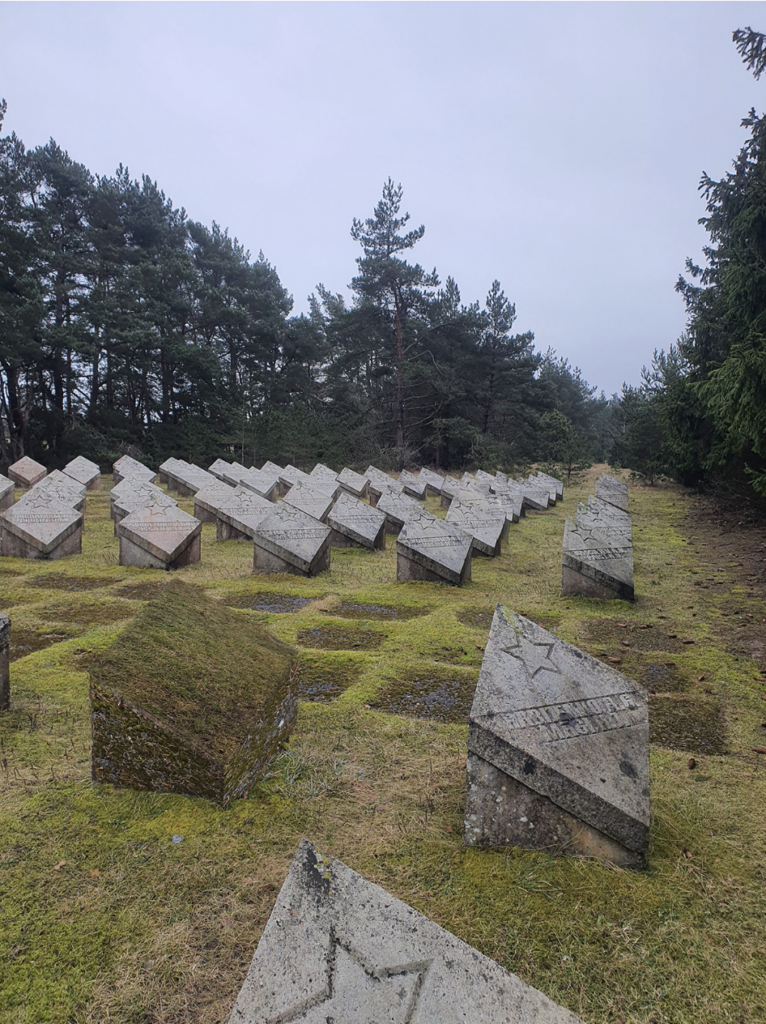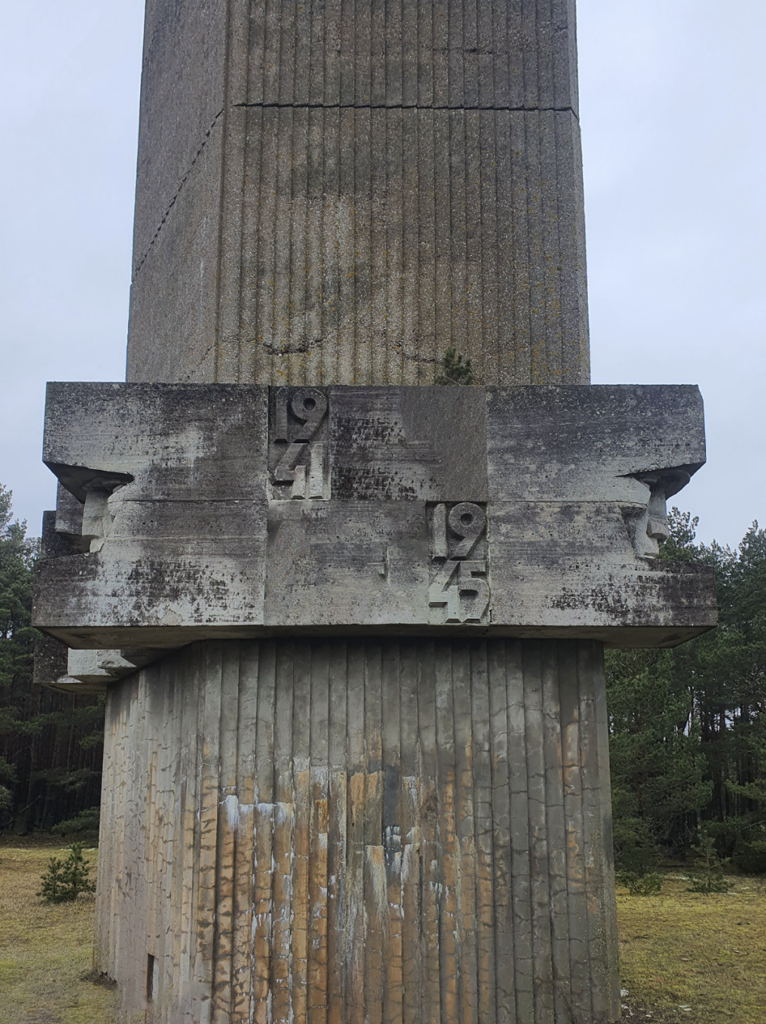
If the elements referring to the Soviets are neutralised, the memorial should either remove the textual part in its entirety or retain the dates 1941 and 1945. A sketch of this solution is presented in the accompanying photograph “The memorial”.
Consideration could also be given to installing a smaller viewing platform on the seaward side of the memorial. The platform would bring the viewer face to face with the portraits of the soldiers depicted on the memorial, allowing the classical power relationship of the monument with the viewer to be displaced, and offering a new abstract harnessing of the portraits by the proximity of the viewer. The platform could be designed in such a way that it would not be visible when approaching the monument from the roadway, and would allow the original view to be preserved without the added visual noise.
The gravestones in the cemetery also form a powerful and exciting ensemble in their own right, with a very striking overall geometric effect. My proposal for covering the Soviet-era symbolism found on them would be experimental, but I believe feasible. Moss could be cultivated on the headstones by gradually covering them with a soft green carpet. This would preserve their overall geometric form, softening their sharp corners slightly. The mossing would have a strong symbolic meaning, referring to something whose power and meaning have long been buried under new layers.
Johannes Säre 17.03.2024

